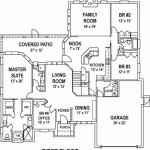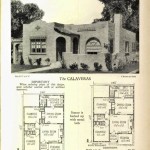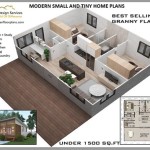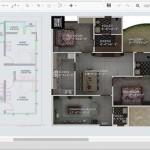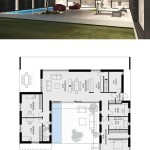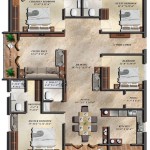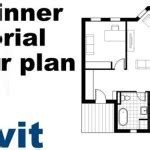Design Basics House Plans: An In-Depth Guide
Design Basics house plans represent a widely recognized collection of residential architectural designs, catering to a diverse range of homeowner needs and preferences. These plans offer a starting point for individuals seeking professionally designed homes, often providing a cost-effective alternative to engaging a custom architect. Understanding the nuances of Design Basics plans, including their features, limitations, and available options, is crucial for making informed decisions throughout the home building process.
The appeal of Design Basics house plans lies in their accessibility and comprehensive nature. Typically, a Design Basics plan set includes detailed blueprints, foundation plans, floor plans, elevations, roof plans, and sometimes even mechanical, electrical, and plumbing (MEP) drawings. This level of detail allows builders and contractors to accurately interpret the design intent and execute the construction accordingly. However, it’s essential to remember that these plans are generally pre-designed and may require modifications to comply with local building codes and specific site conditions.
Furthermore, Design Basics offers a variety of styles ranging from traditional to contemporary, encompassing ranch-style, two-story, and multi-level homes. This breadth of options allows prospective homeowners to find a design that aligns with their aesthetic sensibilities and lifestyle requirements. Before committing to a specific plan, it's important to conduct a thorough review and consider factors such as lot size, budget constraints, and personal preferences.
The information presented in this article aims to provide a comprehensive overview of Design Basics house plans, addressing key aspects such as plan features, modification options, legal considerations, and alternative resources. This understanding will empower individuals to navigate the complexities of selecting and utilizing these plans effectively, contributing to a successful and fulfilling home building experience.
Understanding the Core Features of Design Basics House Plans
Design Basics house plans are characterized by a set of common features that define their structure and content. A typical plan set will include several essential components, each serving a specific purpose in the construction process. These components are designed to provide builders with the necessary information to accurately construct the home as envisioned by the architect.
The foundation plan is a critical element, outlining the dimensions and specifications of the foundation system. This plan will detail the type of foundation specified (e.g., slab-on-grade, crawl space, basement), the dimensions of the footings, foundation walls, and any supporting piers or columns. It is imperative that the foundation plan be reviewed and adapted by a structural engineer to ensure it is suitable for the specific soil conditions and seismic activity of the building site. Failure to do so could result in structural instability and costly repairs.
Floor plans are perhaps the most widely consulted aspect of a Design Basics plan. These plans illustrate the layout of each level of the home, including the placement of walls, doors, windows, fixtures, and appliances. Dimensions are typically indicated, allowing builders to accurately position each element within the structure. Floor plans also provide information on room sizes, circulation patterns, and overall spatial arrangements, enabling homeowners to visualize the flow of the home.
Exterior elevations depict the appearance of the home from different vantage points, typically including front, rear, and side views. These elevations showcase the architectural style of the home, detailing the placement of windows, doors, roofing materials, and exterior finishes. Elevations are crucial for understanding the aesthetic qualities of the design and ensuring that the finished product aligns with the homeowner's visual expectations. They also inform aesthetic decisions regarding landscaping and exterior ornamentation.
Roof plans provide a detailed view of the roof structure, including the pitch, slope, and materials used. This plan is essential for ensuring proper drainage and structural integrity of the roof. It also specifies the placement of vents, chimneys, and other roof-mounted features. A well-designed roof plan is crucial for preventing leaks and maintaining the longevity of the roofing system.
Cross-section drawings offer a vertical cut-through of the home, revealing the internal structure and relationships between different building components. These drawings illustrate the framing details, insulation layers, and the overall construction methodology. Cross-sections are particularly useful for understanding the complexities of the building envelope and ensuring proper thermal performance.
Often, Design Basics plans include electrical, plumbing, and HVAC (heating, ventilation, and air conditioning) plans. These plans show the locations of outlets, switches, light fixtures, plumbing lines, and HVAC equipment. They are essential for ensuring that the home's mechanical systems are properly installed and function efficiently. However, these plans might require modifications to comply with local codes and available utilities.
It is important for prospective homeowners to carefully review all components of a Design Basics plan set to gain a comprehensive understanding of the design. This thorough review will facilitate informed decision-making and minimize potential issues during the construction phase.
Modifying Design Basics House Plans: Customization and Considerations
While Design Basics house plans offer a wide selection of pre-designed homes, many homeowners find it necessary or desirable to modify the plans to better suit their individual needs and preferences. These modifications can range from minor adjustments, such as changing the location of a window, to more substantial alterations, such as expanding the floor plan or altering the roofline. Understanding the process and considerations involved in modifying these plans is crucial for ensuring a successful outcome.
Before undertaking any modifications, it is essential to consult with a qualified architect or structural engineer. These professionals can assess the feasibility of the proposed changes, evaluate their potential impact on the structural integrity of the home, and ensure compliance with local building codes. Modifying a house plan without proper professional guidance can lead to significant problems, including structural instability, code violations, and increased construction costs.
One common type of modification involves adapting the floor plan to accommodate specific lifestyle requirements. For example, a homeowner might want to enlarge the kitchen, add a home office, or create a larger master suite closet. These changes can often be accommodated by reconfiguring interior walls and adjusting the layout of fixtures and appliances. However, it is important to consider the impact of these changes on the overall flow of the home and ensure that the modified floor plan remains functional and aesthetically pleasing.
Another frequent modification involves altering the exterior appearance of the home. This could include changing the type of siding, adding a porch or deck, or modifying the roofline. These changes can significantly impact the curb appeal of the home and should be carefully considered in relation to the surrounding environment. It is also important to ensure that the exterior modifications comply with local zoning regulations and homeowner association guidelines.
Modifying the foundation plan may be necessary to adapt the design to specific site conditions. For example, if the building site has poor soil conditions, it may be necessary to reinforce the foundation or switch to a different type of foundation system. Similarly, if the building site is located in a flood zone, it may be necessary to elevate the foundation above the base flood elevation. These modifications are crucial for ensuring the long-term stability and safety of the home.
When modifying a Design Basics house plan, it is important to obtain written permission from the copyright holder. Design Basics, like other architectural design firms, retains the copyright to its plans, and unauthorized modifications can constitute copyright infringement. Obtaining permission typically involves paying a fee and agreeing to certain terms and conditions. This protects both the homeowner and the original designer.
Finally, it is important to document all modifications to the house plan in writing. These modifications should be clearly communicated to the contractor and incorporated into the construction documents. This will help to prevent misunderstandings and ensure that the home is built according to the homeowner's specifications. Maintaining accurate records of all modifications is also important for future reference and for potential resale value.
Legal Aspects and Copyright Considerations
Purchasing and utilizing Design Basics house plans involves adherence to certain legal and copyright considerations. Understanding these aspects is essential to avoid potential legal issues and ensure compliance with intellectual property laws. Generally, the purchase of a house plan does not transfer the full copyright to the buyer but rather grants a limited license for a single construction.
Copyright law protects the intellectual property rights of architects and designers, preventing unauthorized duplication and distribution of their work. Design Basics retains the copyright to its house plans, even after they are sold to a customer. This means that the customer is typically granted a license to use the plans for the construction of a single residence only. Copying, reselling, or distributing the plans without permission is a violation of copyright law and can result in legal action.
The specific terms and conditions of the license agreement are typically outlined in the purchase contract or accompanying documentation. It is important to carefully review these terms before purchasing the plans to understand the limitations on their use. Common restrictions include limitations on the number of times the plans can be used, restrictions on modifying the plans without permission, and prohibitions on distributing the plans to third parties.
Modifying a Design Basics house plan without permission can also constitute copyright infringement. While minor modifications may be permitted, significant alterations that fundamentally change the design of the home typically require the consent of Design Basics. It is advisable to contact Design Basics directly to discuss any proposed modifications and obtain written permission before proceeding.
In some cases, Design Basics may offer options for purchasing a more extensive license that allows for modifications or multiple uses of the plans. These options typically involve paying a higher fee and agreeing to additional terms and conditions. Homeowners who anticipate needing to make significant modifications or who plan to build multiple homes based on the same design should consider purchasing a more comprehensive license.
It is also important to be aware of local building codes and zoning regulations. While Design Basics plans are generally designed to meet standard building practices, they may not comply with all local codes and regulations. It is the responsibility of the homeowner or contractor to ensure that the plans are adapted to meet the specific requirements of the building site. Failure to comply with local codes can result in costly delays and penalties.
When engaging a contractor to build a home based on Design Basics plans, it is important to specify in the contract that the contractor is responsible for ensuring compliance with all applicable building codes and regulations. The contract should also address the issue of copyright infringement and indemnify the homeowner against any claims arising from the contractor's unauthorized use of the plans.
By understanding and respecting the legal and copyright considerations associated with Design Basics house plans, homeowners can avoid potential legal issues and ensure a smooth and successful building process. Consulting with an attorney or legal professional can provide further guidance and ensure that all necessary legal requirements are met.

Design Basics Insulspan Alliance Member

Drawing Floor Plan 101 Basic Principles Esoft

Home Plans Archives Design Basics

Custom Home Plans Designs Design Basics

Free Simple Two Story House Plans

Home Plans For Build To Projects From Design Basics

Home Plan Collections By Design Basics

Home Plan Books Archives Design Basics

Floor Plans Learn How To Design And Plan

Home Plan Books Archives Design Basics
Related Posts

